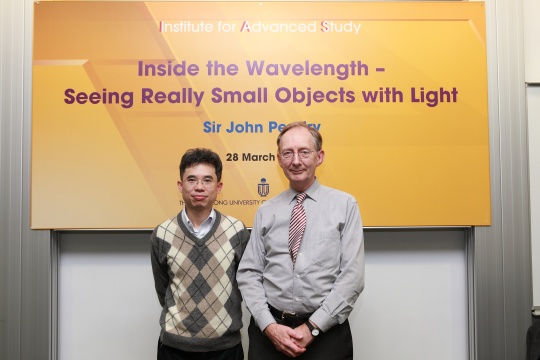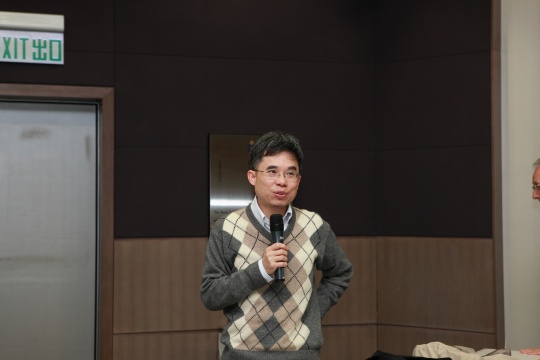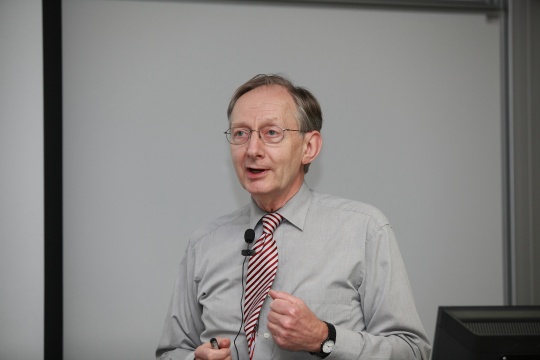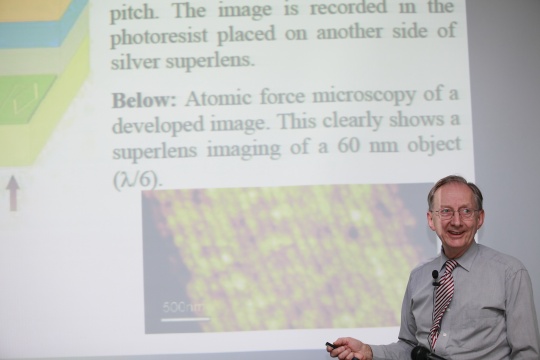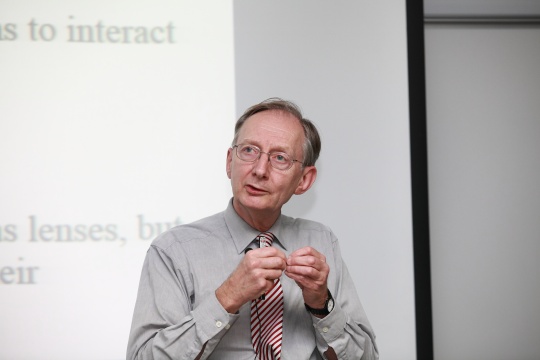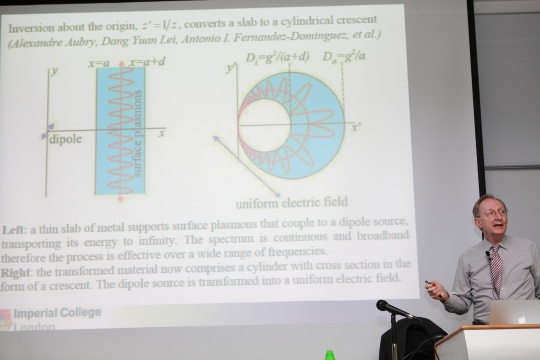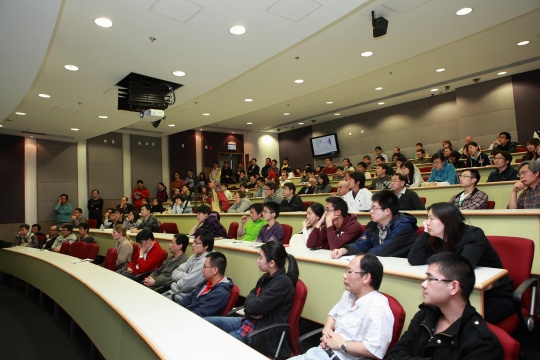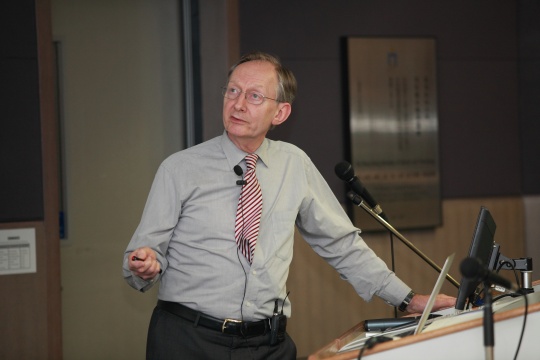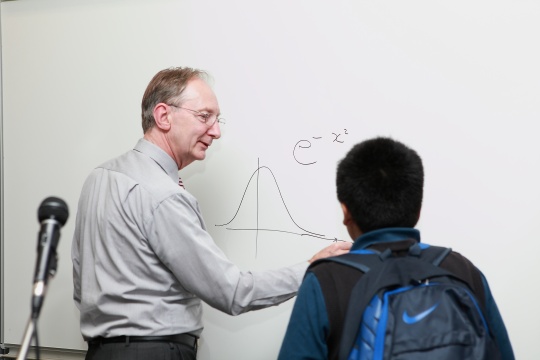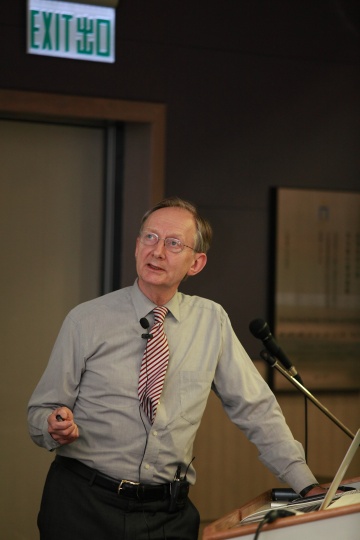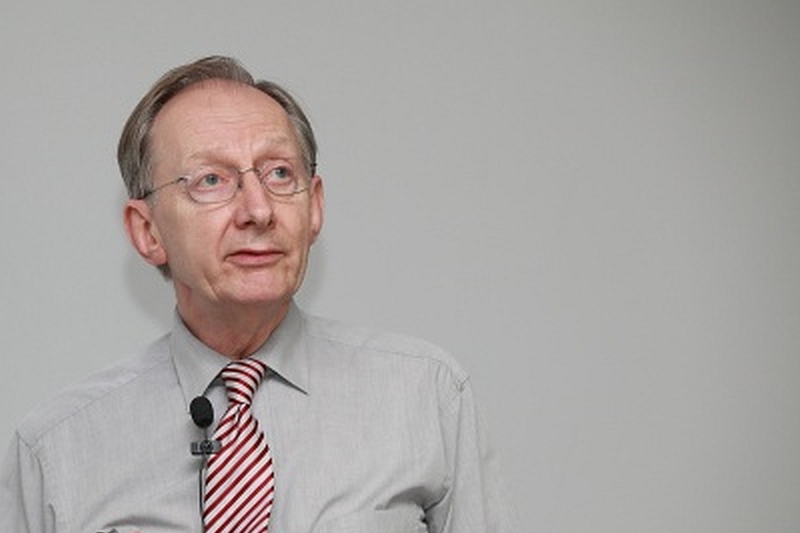Inside the Wavelength - Seeing Really Small Objects with Light
Abstract
Light, though our eyes, gives us the most direct means of observing the world. Using a microscope we can see many objects invisible to the naked eye, but even the microscope has its limitations: it is impossible with a conventional microscope to resolve anything smaller than the wavelength of light. Typically this sets a resolution limit of about 0.5 microns. To do better than this and to 'get inside the wavelength' scientists have been seeking a deeper understanding of light and its component electric and magnetic fields. We can now give a theoretical prescription for the perfect lens that has no limits to resolution. The speaker will report on recent progress and describe some experiments that bring light to an intense focus very much smaller than the free space wavelength.
About the Speaker
Sir John Pendry received his PhD from the University of Cambridge in 1969. He began his career in the Cavendish Laboratory, Cambridge, and has worked at the Blackett Laboratory, Imperial College London, since 1981. He has been Dean of the Royal College of Science (1993–1996), Head of Department at Imperial College (1998–2001), and subsequently Principal of the Faculty of Physical Sciences (2001– 2002). Elected a Fellow of the Royal Society in 1984, he has been Member of Council from 1992–1994, and Editor of the Royal Society Proceedings A from 1996–2002. For the Institute of Physics, since 2007 he has been Member of Council, Chairman of Institute of Physics Publishing and Vice-President for Publishing. He has received honours and awards recognising his contributions, culminating in his knighthood for services to science in 2004, and the Royal Medal of the Royal Society in 2006.
Sir John is a condensed matter theorist known for his research into refractive indexes and creation of the first practical “Invisibility Cloak”. He has worked extensively on electronic and structural properties of surfaces developing the theory of low energy diffraction and of electronic surface states and transport in disordered systems. In 1992, Sir John turned his attention to photonic materials and developed some of the first computer codes capable of handling these novel materials. This interest led to his present research, which concerns the remarkable electromagnetic properties of materials where the normal response to electromagnetic fields is reversed leading to negative values for the refractive index.

